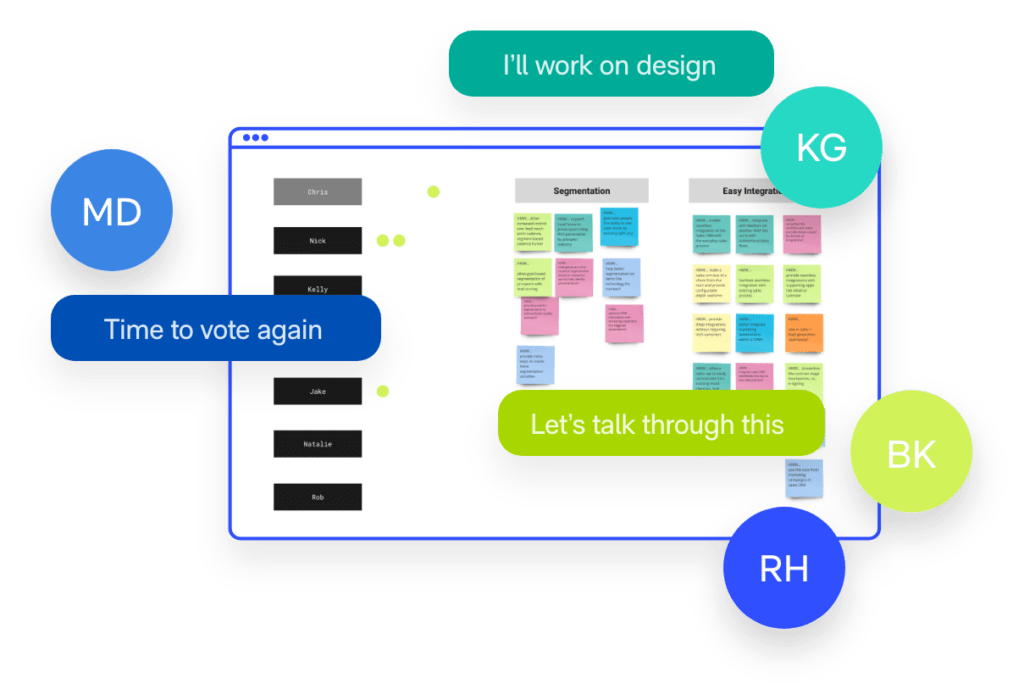Design workshops lay the foundation for the most critical steps in UX design – helping us understand the user, collaborate as a team, find patterns in data, prototype, and sketch ideas. In this article series, we explore four vital attributes of organizing successful remote workshops and share some secrets as to how we have adapted this iconic physical activity for the remote world. In Part 2 of our 4-part series, Remote Workshop Facilitation, we share communication insights that we’ve gleaned over the years from having facilitated dozens of design workshops. Hope it’s useful to you.
The art of communication in design workshops
During a workshop, communication needs to be seamless and simple. To achieve smooth communication, facilitators need to first organize their internal team and the workshop structure. Here are some tips to set the stage for a natural flow in conversation.

Establishing communication with the team
Your team will be your first line of support as you lead or facilitate a workshop. Not only will your internal team be critical during workshop prep, but they also can help you stay focused during workshop exercises. To get the most from your team, you’ll need to clearly communicate workshop goals and how the exercises will move you toward those goals.
Prepare well
Fail fast, fail often – or prototype your workshop. Take a dry run through your workshop using your team as participants. They’ll be your most honest critics. Walk them through your exercises and seek their feedback on presentations. Dry runs are fabulous for uncovering communication gaps and highlighting superfluous activities. Demand honesty from your team and be open to change. Like your clients, your colleagues may be short on time and attention. Therefore, a dry run will help you test how efficiently you’re communicating and the overall flow of the workshop.
Establish roles
Be clear about the role of each team member, and clarify well in advance what you expect, especially in regards to preparation, assistance, and output. We also suggest you assign the following roles prior to the workshop:
- time-keeper
- note-taker
- recorder
*Tip: Consider using multiple facilitators in your workshop. This can improve the speed and frequency of communication and is particularly helpful during remote facilitation.
Establishing communication with the participants
Have a clear agenda
Prepare an agenda two weeks in advance of the workshop. Not only will an agenda help participants plan their day and prepare appropriately for activities, but it can serve as a useful planner for the facilitator – a tool to ensure you have enough time to gather necessary information for workshop activities. Email the agenda to workshop participants one week before the workshop, and post it on your Miro board as a reference for participants.
*Tip: Schedule a 5-minute break between each session. It’s a great way to keep your audience refreshed and engaged.

Listen in
Listen to conversations with intent and with an open mind. To encourage the flow of communication and questions, keep your Slack channel available for participants during the workshop. You should only guide participants through the exercises. Avoid providing them concrete solutions.
*Tip: It’s hard to get deep in remote environments, so don’t be afraid to communicate often and frequently to reinforce a point and find alignment.
Check-ins
Periodic check-ins allow for question exchange during a workshop. During in-person workshops, it is easy for a facilitator to pop by different groups to see their progress and orientate them. In a remote environment, where participants likely are working from home, there may be more distractions. Online check-ins can help re-orient participants. Make the most of Zoom, Slack, and even email.
*Tip: Encourage participants to exchange questions in the chat window, Slack, or email to make interactions feel less daunting.
Takeaways
For remote workshops to flow seamlessly, it’s important to establish consistent and planned communication. Leverage your online tools. Used strategically, they can make a remote workshop as effective as an in-person workshop.
Are you ready to engage with an experienced UI UX design agency? Let’s talk.
Contributor



